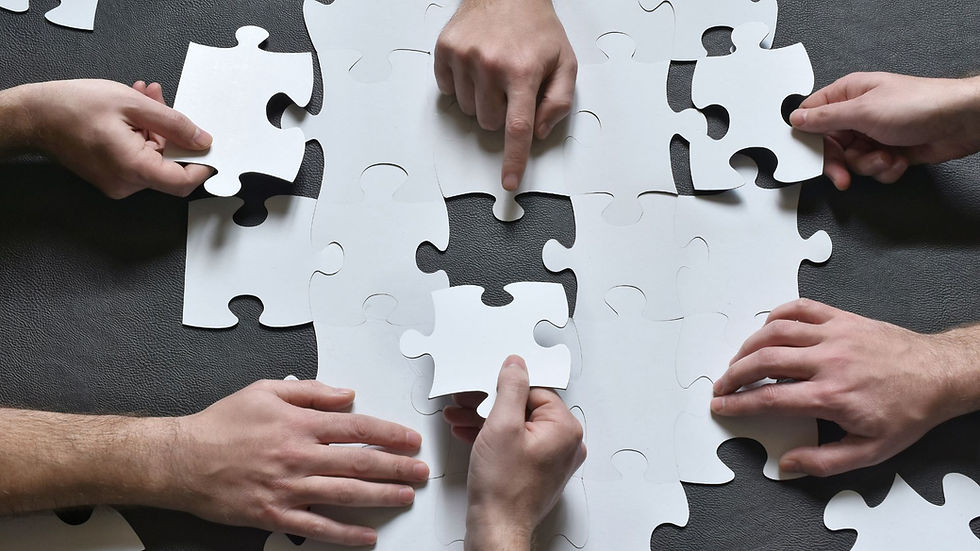How to Launch an App (successfully)
- Sud Creative

- 26 ene 2022
- 6 Min. de lectura
Actualizado: 21 ago 2024
In today’s world, it seems like there’s an app for everything. Need to schedule meetings? There’s an app for that. Manage payroll? Check. Track inventory, ad spend, or content? Triple check!
With the abundance of apps available, you might be wondering if your business should join the fray.
If you’ve got an idea for an app that you believe will resonate with your customers, we’ve put together a comprehensive guide of 11 steps to help you launch it successfully.
Let’s dive in!

1. Research Your Market
Before diving into the excitement of app development, it’s crucial to start with thorough research. This foundational step will help you identify your target audience and market. Begin by asking key questions: What needs will your app fulfill? What is its primary purpose? Who is your user persona?
Market research is essential for understanding the demand for your app. Are there already too many similar apps? How can yours stand out? The insights you gather will provide a clear direction for your project.
2. Define Your Success
Having a vague goal of “success” isn’t enough. You need to set measurable objectives that define what success looks like for your app.
Start by setting SMART goals (Specific, Measurable, Achievable, Relevant, Time-bound):
Specific: Define precise outcomes you want to achieve, such as the number of downloads or active users within a specific time frame.
Measurable: Use quantifiable metrics to track progress, such as user engagement rates, app store ratings, or revenue generated.
Achievable: Set realistic goals based on your resources, market conditions, and competition.
Relevant: Ensure your goals align with your overall business objectives.
Time-bound: Establish deadlines for achieving these goals to maintain focus and urgency.
By tracking performance against these benchmarks, you can assess your app’s success and make data-driven decisions for future updates and marketing efforts.
3. Survey Your Target Audience
Understanding your audience’s needs is key to developing a successful app. Use surveys and questionnaires to gather insights.
Ask questions like: What are your customers’ pain points? What features do they want? What do they dislike about existing solutions? Analyzing these responses will guide your development process.
4. Analyze Survey Data
The data you collect can tell a story, and your job is to interpret that story to guide your decisions. By listening to your target audience, you can avoid pitfalls and focus on building an app that truly serves their needs.
Here’s how to effectively analyze your data:
Organize your data: Begin by categorizing responses based on themes or topics. This will help you identify commonalities and differences in user feedback.
Identify key insights: Look for recurring patterns, such as frequently requested features or common pain points. These insights will highlight what users value most and what they find frustrating.
Prioritize features: Based on the data, prioritize the features that users most desire and those that will have the biggest impact on user satisfaction. This will help you focus your development efforts on what matters most.
Refine your app’s value proposition: Use the insights to fine-tune your app’s value proposition, ensuring it clearly addresses user needs and differentiates you from competitors.
5. Design App Branding
Now comes the fun part—design! This is where your research and audience insights come into play. Your app’s branding should reflect your company’s identity.
Consider the following elements:
Logo: Your app’s logo is the first thing users will see, so make sure it’s memorable and reflects your brand’s personality. Keep it simple yet distinctive.
Color Scheme: Choose colors that align with your brand’s identity and evoke the right emotions in your users. For example, blue often conveys trust and professionalism, while bright colors can suggest fun and energy.
Typography: Select fonts that are legible and consistent with your brand’s tone. Whether you go for something modern and bold or classic and elegant, make sure it’s easy to read on all device sizes.
Voice and Tone: How does your brand communicate? Are you formal and professional, or casual and approachable? Your app’s copy and messaging should be consistent with your overall brand voice.
User Interface (UI) Design: The UI should not only look good but also provide an intuitive experience. Ensure that your app’s design is user-friendly, with easy navigation, clear icons, and a cohesive visual style.
Your branding should make your app easily recognizable and convey the values and promises of your brand. Consistency across all touchpoints—from app design to marketing materials—will strengthen your brand’s identity.

6. Conduct UI Tests
Once your app has gone through the design and development process, it's time to put it to the test! No product or service should launch without first testing it in different ways and environments.
UI tests are performed by several potential users or groups of users. They help developers see how the app functions in real-time. You can set up these tests to achieve specific objectives and assign the groups to said tasks.
These tests can measure how long tasks take to complete, which helps gauge how fast your app runs. It's also a great time to resolve any bugs or issues found during testing. During this phase, user feedback is collected to know where improvements must be made or where better usability can be implemented.
7. Claim Social Media Accounts
You have put all the hard work into developing the app, you have conducted your UI tests and worked out necessary bugs, it's now time to get the ball rolling on your marketing.
But before you get started, you want to make sure you have claimed all social media you wish to utilize for your app. Whether it's Instagram, Twitter, or TikTok, choose social media that best align with how your users would most likely connect with you.

8. Begin Marketing Campaign for App Launch
Your marketing campaign should create excitement and buzz around your app launch. Use a mix of organic and paid strategies to reach your audience.
Here are some effective tactics:
Teaser Campaigns: Start building anticipation before the launch by releasing teasers. This could be short videos, countdowns, or sneak peeks of your app’s features.
Influencer Partnerships: Collaborate with influencers who align with your brand and target audience. Their endorsement can help you reach a larger, more engaged audience.
Content Marketing: Create valuable content that educates and engages your audience. Blog posts, how-to guides, and tutorials that highlight your app’s benefits can drive organic traffic.
SEO: Optimize your app’s landing page and related content with relevant keywords to improve visibility in search engines.
Social Media Ads: Use targeted ads on social media to reach potential users. Focus on platforms where your audience is most active, and use compelling visuals and copy to capture their attention.
Email Marketing: Build an email list of interested users and send regular updates leading up to the launch. Offer exclusive early access or discounts to encourage sign-ups.
Press Coverage: Reach out to tech blogs, industry websites, and media outlets to secure coverage for your app. A well-timed press release can generate significant attention.
9. Launch
The big day has arrived! After all the planning, research, and development, it’s time to launch your app.
Here’s how to ensure a smooth launch:
Coordinate your team: Make sure everyone involved in the launch—developers, marketers, customer support—is on the same page and ready to respond to any issues that arise.
Monitor performance: Keep an eye on your app’s performance metrics in real-time. Watch for any signs of technical issues, server overloads, or other problems that could affect the user experience.
Engage with users: Be active on social media and app store platforms to respond to user feedback, questions, and reviews. Early engagement can help build a positive reputation and encourage word-of-mouth promotion.
Celebrate: Don’t forget to celebrate this milestone with your team! A successful app launch is the result of hard work and collaboration, so take a moment to appreciate the achievement.
10. Collect User Feedback
As more users download the app, gather feedback to help you gain a better view of changes you can make for a more enjoyable and valuable experience for your users. For example, feedback is a great way to know if you should create new features or if usability needs improvement.
11. Continue to Monitor and Make Improvements
Your work doesn’t end with the launch. Continuously monitor your app’s performance and make improvements as needed.
Here’s how to ensure your app remains competitive:
Track key metrics: Monitor metrics like user retention, engagement, and conversion rates. This data will help you understand how well your app is performing and where it can be improved.
Update regularly: Release regular updates to fix bugs, improve performance, and introduce new features. Keeping your app fresh and responsive to user feedback will help retain users and attract new ones.
Stay ahead of the competition: Keep an eye on your competitors and industry trends. Be ready to adapt your app to meet new challenges or capitalize on emerging opportunities.
Engage with your community: Build a community around your app by engaging with users through social media, forums, and in-app communication. A loyal user base can be a powerful advocate for your app.
Are You Ready to Create Your App?
Planning and developing an app is just the beginning. The real challenge lies in effectively promoting it.
At Sud Creative, we specialize in crafting marketing strategies for the tech industry. From launch planning to brand awareness and sales funnel optimization, we’re here to help.
If you want to know more about how we do it, don't hesitate to contact us!





Comentarios